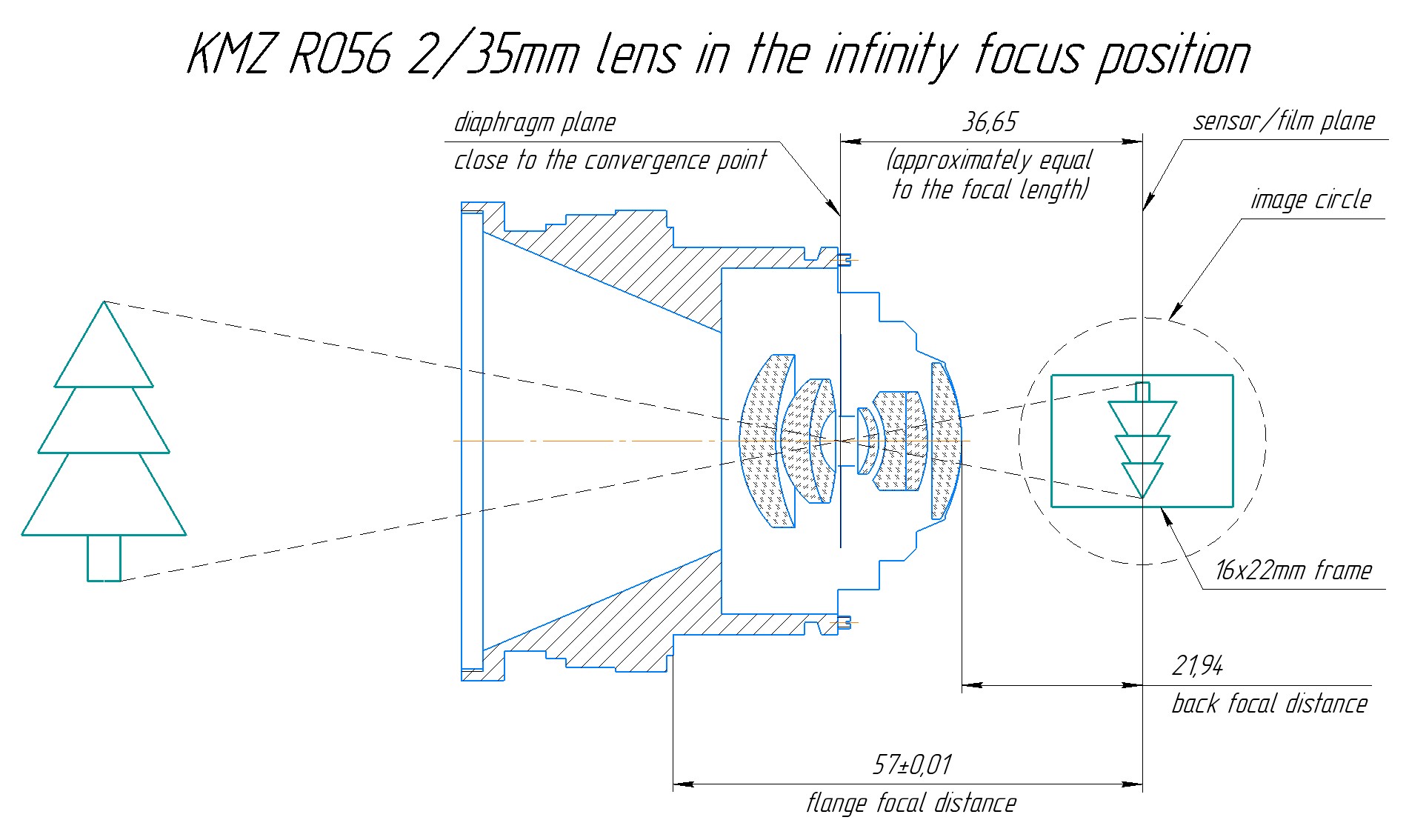Focal Length
Focal length is one of the main parameters of any lens. This is the distance from the optical center of a lens to the camera sensor when the lens is focused to infinity. It is usually measured in millimeters (mm). The optical center of a lens is the light rays convergence point inside the lens. Focal length determines useful angle of view for specific frame size in vertical and horizontal planes. Shorter focal length means wider angle of view both in the objects plane and in the image plane. Longer focal length lenses give a larger image of the object.
On the diagram below, the object is located at the same distance from the camera sensor. But due to the lens optical center is farther from the sensor, a 75mm lens produces a larger image than a 35mm lens.

View angle of a lens is formed by the lines connecting center of the lens front element with border points of the space pictured by the lens with acceptable sharpness and brightness. The lens can be used for shooting on the frame size with diagonal that is less or equal to the diameter of the image circle of the lens. Many cine lenses have larger image circle than the size of the acceptable image quality circle, so the actual view angle of most lenses is greater than the view angle determined by the frame size.
Please don't mess a lens focal length, flange focal distance and back focal distance. These are three different parameters, as you can see on the diagram below.

Lenses made in USSR have the following focal lengths:
- for 16x22 frame on 35mm film - 10, 14, (16), 18, 22, 28, (32), 35, 40, 50, 75, (80), 100, 125, 150, 200, 300, 500, 750 and 1000mm;
- for 52.5x23mm frame on 70mm film - (15), 22, 28, 40, 56, 75, 100, 125, 150 and 200mm.
Values in parentheses were not recommended for new lenses to be designed.
Deviation of the actual focal lengths from the values listed above should not exceed ±2% for lenses with F<=22mm, and ±3% for all other lenses.
Frequent questions about focal length
1. How does focal length affect the image?
Shorter focal lengths (wide-angle lenses) capture more of the scene in the frame, making them suitable for landscapes and tight spaces. Longer focal lengths (telephoto lenses) bring distant subjects closer, making them ideal for sports and wildlife photography.
2. What is the difference between a wide-angle and a telephoto lens?
Wide-angle lenses have shorter focal lengths, typically less than 35mm, providing a broad field of view. Telephoto lenses have longer focal lengths, often above 70mm, allowing for magnification and bringing distant subjects closer.
3. What is the "normal" focal length?
The "normal" focal length is generally considered to be around 50mm on a full-frame camera. A 50mm lens provides a field of view similar to what the human eye perceives, making it versatile for various types of photography.
4. How does focal length impact depth of field?
Shorter focal lengths (wide-angle) tend to have a deeper depth of field, keeping more of the scene in focus. Longer focal lengths (telephoto) can create a shallower depth of field, isolating the subject from the background.
5. Is a higher focal length always better?
The choice of focal length depends on the intended use. Higher focal lengths are not necessarily better; it depends on the photographer's creative vision and the type of photography. Each focal length has its advantages in different situations.
6. What does "zoom lens" mean?
A zoom lens has a variable focal length, allowing the photographer to adjust the magnification level. For example, a 24-70mm lens is a zoom lens that can be set to 24mm for wide shots, 50mm for a normal view, and 70mm for a closer view.
7. How does crop factor affect focal length?
Crop factor, associated with cameras with smaller sensors, effectively multiplies the focal length of a lens. For example, a 50mm lens on a camera with a crop factor of 1.5x behaves like a 75mm lens (50mm x 1.5).
Understanding focal length is essential for photographers, as it plays a crucial role in composition, perspective, and the overall look of an image.

